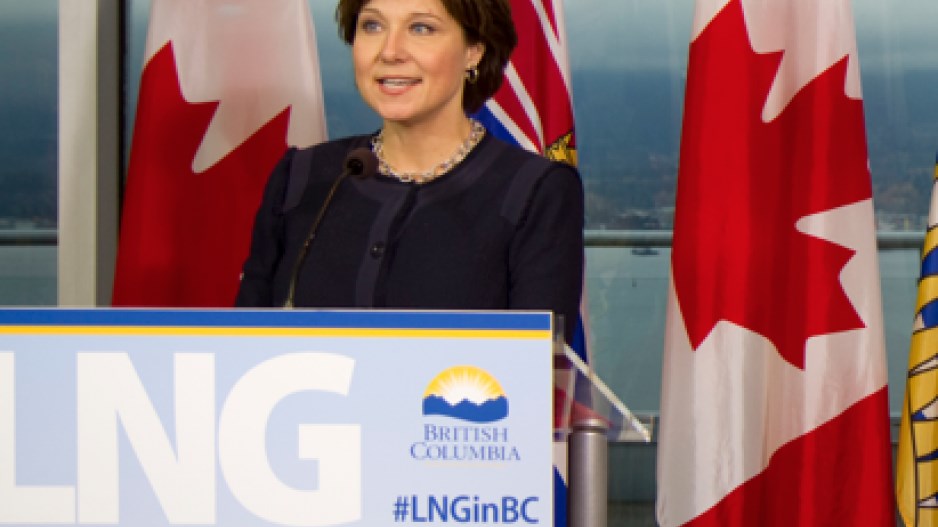The B.C. government has signed an agreement with Australia’s Woodside Petroleum Ltd. for a southern parcel of Grassy Point near Prince Rupert that could be the new home for an LNG export facility.
In November, the province inked a land deal with Nexen Energy ULC –a division of CNOOC Ltd. – for the Aurora LNG plant to be located at Grassy Point. The province said at the time it was continuing to negotiate with three other proponents for a potential site adjacent to this location, which culminated in the Woodside deal.
Other proponents that submitted an expression of interest for Grassy Point included SK E&S, a multi-utility player in northeast Asia’s gas and electricity business, based in Korea, and the partnership of Imperial Oil Resources Limited and ExxonMobil Canada Ltd.
The province and Woodside signed a sole proponent agreement, which provides the company with the exclusive right to negotiate a long-term tenure for an LNG facility at a southern site of Grassy Point.
“Woodside looks forward to working with the government of British Columbia, the First Nations and the community as we assess the feasibility of an LNG development at Grassy Point,” said Peter Coleman, Woodside’s chief executive officer and managing director.
Woodside is Australia’s largest independent oil and gas company. With the successful start-up of the Pluto LNG plant in 2012, Woodside now operates six of the seven LNG processing trains in Australia. The company also operates four oil floating production storage and offloading (FPSO) vessels in the Exmouth Basin, North West Shelf and Timor Sea.
According to the B.C. agreement, Woodside must meet several milestones, including applying for an export permit from the National Energy Board and submitting project descriptions with British Columbia and the federal government to successfully complete the environmental assessment process.
Grassy Point is in the same area where a project was cancelled nearly three decades ago.
In the 1980s, a project that would have supplied 2.35 million tons of LNG annually to Japan for a 20-year period was eventually cancelled in 1986. Construction of a $500 million pipeline, a $2 billion gas liquefaction plant near Prince Rupert and a $1 billion fleet of Japanese-built LNG tankers were all part of the project.
Mobil Oil Corp., on behalf of its Canadian subsidiary Mobil Oil Canada Ltd., said at the time that both buyers and sellers of the LNG decided to end talks without reaching an agreement. Mobil and Petro-Canada had been major players in the project since May 1985.
The project was initially started by Dome Petroleum Limited about five years before the cancellation but due to its own financial difficulties, Dome was forced to withdraw in June 1984.




